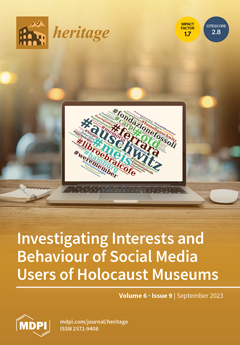Open AccessArticle
An Enhanced Methodology for Creating Digital Twins within a Paleontological Museum Using Photogrammetry and Laser Scanning Techniques
by
Markos Konstantakis, Georgios Trichopoulos, John Aliprantis, Konstantinos Michalakis, George Caridakis, Athina Thanou, Anastasios Zafeiropoulos, Stamatina Sklavounou, Christos Psarras, Symeon Papavassiliou and Efterpi Koskeridou
Cited by 3 | Viewed by 1568
Abstract
In recent years, researchers in the field of natural heritage have intensified their efforts to develop new ways to enhance the promotion and accessibility of natural content in order to attract more audiences using virtual representations of physical objects (digital twins). Therefore, they
[...] Read more.
In recent years, researchers in the field of natural heritage have intensified their efforts to develop new ways to enhance the promotion and accessibility of natural content in order to attract more audiences using virtual representations of physical objects (digital twins). Therefore, they are increasingly incorporating new technologies and digital tools in their operations since their usage by the general public and in the natural heritage (NH) museums is considered particularly effective. Simultaneously, the increasing quality of the produced digitizations has opened up new opportunities for the exploitation of the outcomes of digitization beyond the initial anticipations. Responding to the growing demand of museum visitors for a personalized digital tour experience, especially amidst the recent COVID-19 pandemic, the v-PalM project aims to develop a digital platform to offer virtual guidance and education services at the Museum of Paleontology and Geology, which is hosted at the National Kapodistrian University of Athens. The development of the platform will be based on collecting data through various methods, including crowdsourcing, innovative information, and communication technologies, taking advantage of content digitization using 3D scanning devices. This paper demonstrates an enhanced methodology for the digitization of paleontological exhibits. The methodology uses photogrammetry and laser scanning methods from various devices, such as drones, laser scanners, and smartphones. These methods create digital twins that are suitable for various scenarios, including research, education, and entertainment. The proposed methodology has been applied to over fifty paleontological museum exhibits of varying sizes and complexities, and the resulting 3D models exhibit high accuracy in both their material and geometric aspects, while they also feature crucial details that assist researchers and the scientific community.
Full article
►▼
Show Figures





